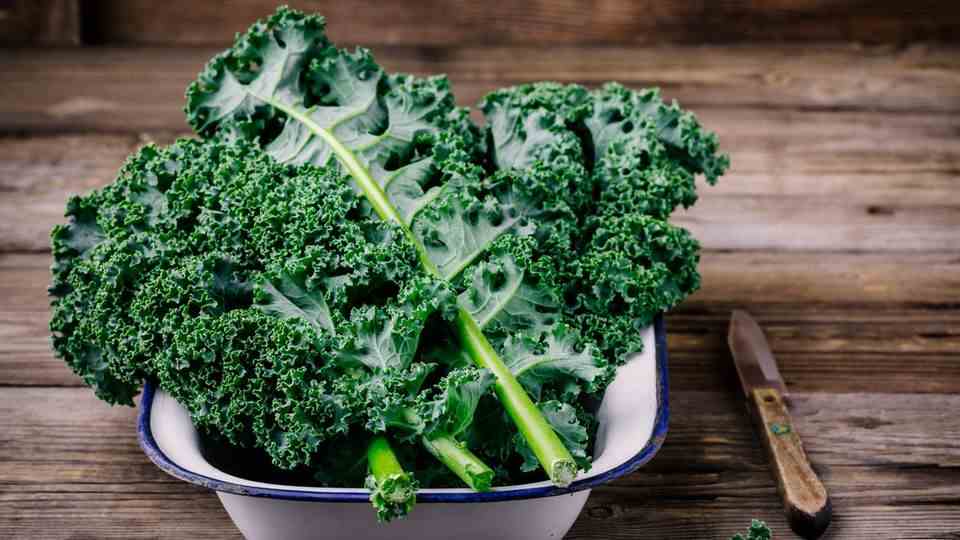study
How gut bacteria can influence food preferences
apple or donut? The food we eat could be influenced by microbes in the gut.
© Creativebird/ / Getty Images
Who does not know the cravings for certain foods? Microorganisms in the intestine could have an influence on eating behavior – at least in mice.
Vegetables or potato chips? Pasta or salad? Every day we are faced with the choice of what foods we eat. But do we decide what we have an appetite for, not from the head, but from the gut? It’s probably not entirely our decision. An experiment by researchers at the University of Pittsburgh suggests that bacteria living in our gut may be responsible for our food preferences. At least, researchers have now proven this in mice.
More precisely: How big your hunger for carbohydrates is could be influenced by the microbiome. The microbiome is the entirety of all microorganisms such as bacteria, fungi or viruses that populate the intestine. The results were published in the journal Proceedings of the National Academy of Sciences. Even though scientists have long puzzled over the connection between food preferences and the composition of the microbiome, researchers have never tested this thesis on animals larger than a fruit fly, according to the study statement. The two biologists Kevin Kohl and Brian Trevelline have now tested the idea on mice. The rodents are more commonly used as a model for humans in studies.
The two researchers transplanted microorganisms from three wild rodent species into 30 mice living in the germ-free laboratory: the herbivorous Rocky Mountain vole, the omnivorous white-footed vole, or the carnivorous grasshopper vole. The group of mice whose guts were seeded with the carnivore or omnivore microbes favored a higher carbohydrate diet than the mice that were seeded with the herbivore microbes. So that means: The microbiome has changed the preferred food of the mice. The two researchers observed that the effect increased within a week. The effect of the new microbes only seems to unfold over time. Over 11 days, the mice with the herbivore microbiome consumed fewer carbohydrates and calories, but just as many nutrients and proteins as their conspecifics with the carnivorous and omnivorous microbes.
Microbes could affect communication between the brain and gut
The two biologists also noticed that the mice with different microbiomes also had different amounts of tryptophan in their blood. “Tryptophan is an essential amino acid produced by gut microbes. When it gets to the brain, it’s converted to serotonin, a signal important for feeling full after a meal,” explains Brian Trevelline.
It came as no great surprise to the two researchers that microbes influence eating behavior. Because the gut and the brain are in constant exchange. By-products of digestion such as tryptophan act as a kind of mediator between the intestine and the brain. They can signal to the brain that enough food has been consumed or that certain nutrients are still needed. The two researchers suspect that the microbes in the gut are hijacking this communication channel. The gut microbiome influences nutrition by changing the availability of such essential amino acids. “There are probably dozens of signals that influence daily eating behavior. Tryptophan, which is produced by microbes, could be just one aspect of this,” says Trevelline.
Further research needed
Other research has found that sugar or artificial additives can harm microbiome diversity. Also, it is known that lean people have a greater variety of microbes than corpulent ones, like him star reported. More research is needed to find out where food cravings come from.
Scientists also have yet to find out what role microbes play and how important they are. “It could be that what you ate the day before is more important than just the microbes you have in your gut,” says biologist Kevin Kohl. It is also not clear to what extent the findings can be extrapolated to humans. Another weak point of the investigation: The laboratory mice lived in a germ-free environment. That could falsify the results, after all, mice do not live in cleanliness outside of such research facilities, but are surrounded by many microbes.
Sources: Study in the Proceedings of the National Academy of Sciences, Notice of the study



